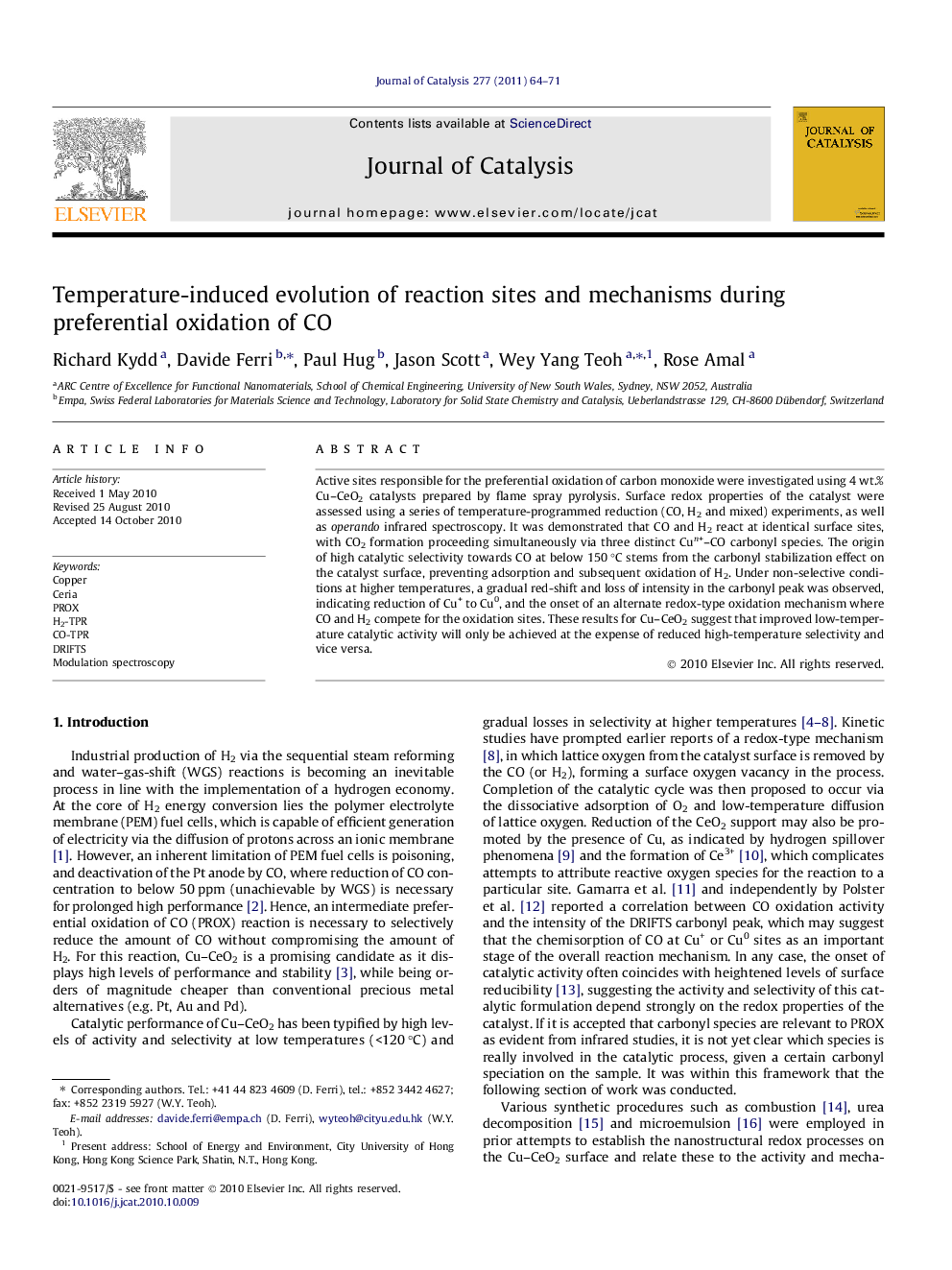| Article ID | Journal | Published Year | Pages | File Type |
|---|---|---|---|---|
| 61840 | Journal of Catalysis | 2011 | 8 Pages |
Active sites responsible for the preferential oxidation of carbon monoxide were investigated using 4 wt.% Cu–CeO2 catalysts prepared by flame spray pyrolysis. Surface redox properties of the catalyst were assessed using a series of temperature-programmed reduction (CO, H2 and mixed) experiments, as well as operando infrared spectroscopy. It was demonstrated that CO and H2 react at identical surface sites, with CO2 formation proceeding simultaneously via three distinct Cun+–CO carbonyl species. The origin of high catalytic selectivity towards CO at below 150 °C stems from the carbonyl stabilization effect on the catalyst surface, preventing adsorption and subsequent oxidation of H2. Under non-selective conditions at higher temperatures, a gradual red-shift and loss of intensity in the carbonyl peak was observed, indicating reduction of Cu+ to Cu0, and the onset of an alternate redox-type oxidation mechanism where CO and H2 compete for the oxidation sites. These results for Cu–CeO2 suggest that improved low-temperature catalytic activity will only be achieved at the expense of reduced high-temperature selectivity and vice versa.
Graphical abstractThe origin of preferential oxidation (PROX) of CO in the presence of H2 was traced to the carbonyl stabilization on partially-reduced copper oxide surface, at below 150 °C, preventing thus incoming H2 from approaching the oxidation sites.Figure optionsDownload full-size imageDownload high-quality image (182 K)Download as PowerPoint slide
